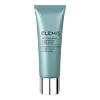What's inside
What's inside
 Key Ingredients
Key Ingredients

 Benefits
Benefits

 Concerns
Concerns

 Ingredients Side-by-side
Ingredients Side-by-side

Water
Skin ConditioningButylene Glycol
HumectantLactococcus Ferment Lysate
Skin ConditioningPolysorbate 20
EmulsifyingMethyl Gluceth-20
HumectantLactic Acid
BufferingPhenoxyethanol
PreservativeBetaine
HumectantPropylene Glycol
HumectantDisodium EDTA
Benzoic Acid
MaskingSodium Hydroxide
BufferingParfum
MaskingDehydroacetic Acid
PreservativeTromethamine
BufferingEthylhexylglycerin
Skin ConditioningPapain
Skin ConditioningSaponins
CleansingSodium Benzoate
MaskingSodium Chloride
MaskingGlycerin
HumectantBehenyl Alcohol
EmollientButyrospermum Parkii Butter
Skin ConditioningHydrogenated Castor Oil
EmollientStearyl Alcohol
EmollientPoria Cocos Extract
Skin ConditioningProtease
ExfoliatingSaponaria Officinalis Leaf/Root Extract
Skin ConditioningSubtilisin
Skin ConditioningTocopheryl Acetate
AntioxidantWater, Butylene Glycol, Lactococcus Ferment Lysate, Polysorbate 20, Methyl Gluceth-20, Lactic Acid, Phenoxyethanol, Betaine, Propylene Glycol, Disodium EDTA, Benzoic Acid, Sodium Hydroxide, Parfum, Dehydroacetic Acid, Tromethamine, Ethylhexylglycerin, Papain, Saponins, Sodium Benzoate, Sodium Chloride, Glycerin, Behenyl Alcohol, Butyrospermum Parkii Butter, Hydrogenated Castor Oil, Stearyl Alcohol, Poria Cocos Extract, Protease, Saponaria Officinalis Leaf/Root Extract, Subtilisin, Tocopheryl Acetate
Glycerin
HumectantCaprylic/Capric Triglyceride
MaskingPrunus Amygdalus Dulcis Oil
Skin ConditioningMicrocrystalline Cellulose
AbsorbentSambucus Nigra Oil
MaskingWater
Skin ConditioningPolyglyceryl-4 Laurate
EmulsifyingAvena Sativa Kernel Oil
Skin ConditioningTriticum Vulgare Germ Oil
EmollientPolyglyceryl-2 Stearate
EmulsifyingPolyglyceryl-6 Laurate
EmulsifyingLavandula Angustifolia Oil
MaskingGlyceryl Stearate
EmollientStearyl Alcohol
EmollientBorago Officinalis Seed Oil
EmollientLinalool
PerfumingLavandula Hybrida Oil
EmollientPelargonium Graveolens Flower Oil
MaskingEucalyptus Globulus Leaf Oil
PerfumingGeraniol
PerfumingTocopherol
AntioxidantAnthemis Nobilis Flower Oil
MaskingHippophae Rhamnoides Fruit Oil
Skin ProtectingCocoyl Hydrolyzed Collagen
CleansingCinnamomum Camphora Bark Oil
MaskingLimonene
PerfumingMentha Arvensis Leaf Oil
MaskingAcacia Decurrens Flower Wax
EmollientRosa Multiflora Flower Wax
Skin ConditioningSimmondsia Chinensis Seed Oil
EmollientCitrus Aurantium Dulcis Oil
MaskingParfum
MaskingVitis Vinifera Seed Oil
EmollientHelianthus Annuus Seed Oil
EmollientMenthol
MaskingEugenia Caryophyllus Leaf Oil
MaskingPadina Pavonica Thallus Extract
Skin ConditioningGlycerin, Caprylic/Capric Triglyceride, Prunus Amygdalus Dulcis Oil, Microcrystalline Cellulose, Sambucus Nigra Oil, Water, Polyglyceryl-4 Laurate, Avena Sativa Kernel Oil, Triticum Vulgare Germ Oil, Polyglyceryl-2 Stearate, Polyglyceryl-6 Laurate, Lavandula Angustifolia Oil, Glyceryl Stearate, Stearyl Alcohol, Borago Officinalis Seed Oil, Linalool, Lavandula Hybrida Oil, Pelargonium Graveolens Flower Oil, Eucalyptus Globulus Leaf Oil, Geraniol, Tocopherol, Anthemis Nobilis Flower Oil, Hippophae Rhamnoides Fruit Oil, Cocoyl Hydrolyzed Collagen, Cinnamomum Camphora Bark Oil, Limonene, Mentha Arvensis Leaf Oil, Acacia Decurrens Flower Wax, Rosa Multiflora Flower Wax, Simmondsia Chinensis Seed Oil, Citrus Aurantium Dulcis Oil, Parfum, Vitis Vinifera Seed Oil, Helianthus Annuus Seed Oil, Menthol, Eugenia Caryophyllus Leaf Oil, Padina Pavonica Thallus Extract
 Reviews
Reviews

Ingredients Explained
These ingredients are found in both products.
Ingredients higher up in an ingredient list are typically present in a larger amount.
Glycerin is already naturally found in your skin. It helps moisturize and protect your skin.
A study from 2016 found glycerin to be more effective as a humectant than AHAs and hyaluronic acid.
As a humectant, it helps the skin stay hydrated by pulling moisture to your skin. The low molecular weight of glycerin allows it to pull moisture into the deeper layers of your skin.
Hydrated skin improves your skin barrier; Your skin barrier helps protect against irritants and bacteria.
Glycerin has also been found to have antimicrobial and antiviral properties. Due to these properties, glycerin is often used in wound and burn treatments.
In cosmetics, glycerin is usually derived from plants such as soybean or palm. However, it can also be sourced from animals, such as tallow or animal fat.
This ingredient is organic, colorless, odorless, and non-toxic.
Glycerin is the name for this ingredient in American English. British English uses Glycerol/Glycerine.
Learn more about GlycerinParfum is a catch-all term for an ingredient or more that is used to give a scent to products.
Also called "fragrance", this ingredient can be a blend of hundreds of chemicals or plant oils. This means every product with "fragrance" or "parfum" in the ingredients list is a different mixture.
For instance, Habanolide is a proprietary trade name for a specific aroma chemical. When used as a fragrance ingredient in cosmetics, most aroma chemicals fall under the broad labeling category of “FRAGRANCE” or “PARFUM” according to EU and US regulations.
The term 'parfum' or 'fragrance' is not regulated in many countries. In many cases, it is up to the brand to define this term.
For instance, many brands choose to label themselves as "fragrance-free" because they are not using synthetic fragrances. However, their products may still contain ingredients such as essential oils that are considered a fragrance by INCI standards.
One example is Calendula flower extract. Calendula is an essential oil that still imparts a scent or 'fragrance'.
Depending on the blend, the ingredients in the mixture can cause allergies and sensitivities on the skin. Some ingredients that are known EU allergens include linalool and citronellol.
Parfum can also be used to mask or cover an unpleasant scent.
The bottom line is: not all fragrances/parfum/ingredients are created equally. If you are worried about fragrances, we recommend taking a closer look at an ingredient. And of course, we always recommend speaking with a professional.
Learn more about ParfumStearyl Alcohol is a type of fatty alcohol from stearic acid. It is a white, waxy compound used to emulsify ingredients.
Fatty Alcohols are most often used as an emollient or to thicken a product. Emollients help soothe and hydrate the skin by trapping moisture.
They are usually derived from natural fats and oils and therefore do not have the same drying or irritating effect as solvent alcohols. FDA allows products labeled "alcohol-free" to have fatty alcohols.
Learn more about Stearyl AlcoholWater. It's the most common cosmetic ingredient of all. You'll usually see it at the top of ingredient lists, meaning that it makes up the largest part of the product.
So why is it so popular? Water most often acts as a solvent - this means that it helps dissolve other ingredients into the formulation.
You'll also recognize water as that liquid we all need to stay alive. If you see this, drink a glass of water. Stay hydrated!
Learn more about Water